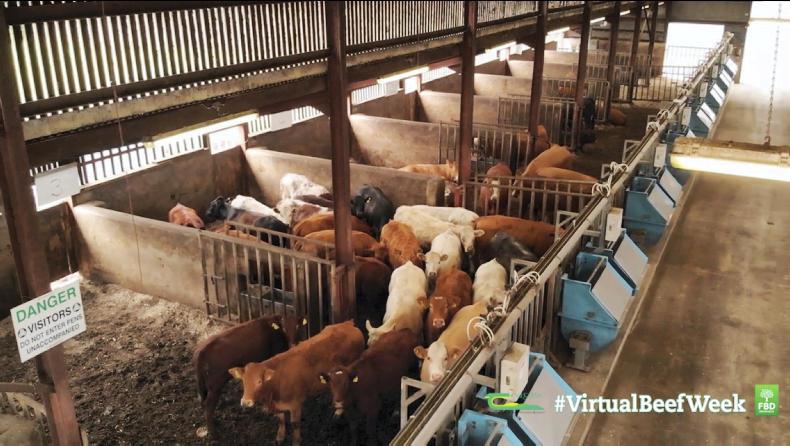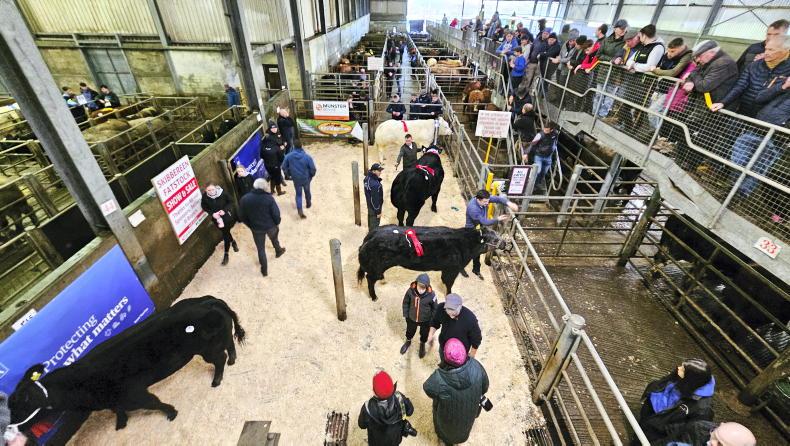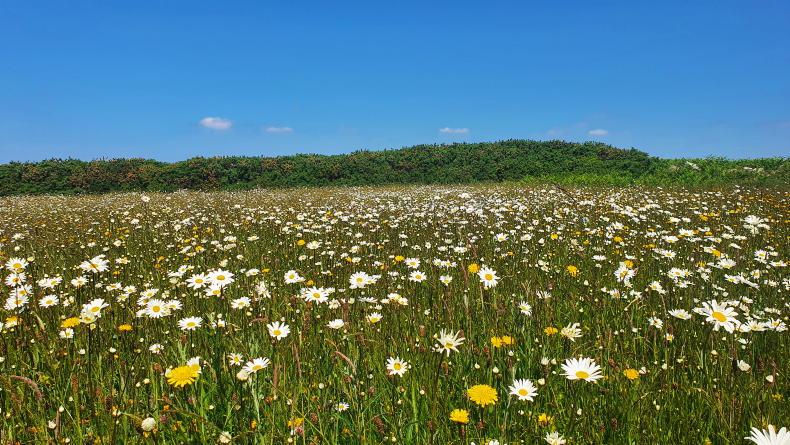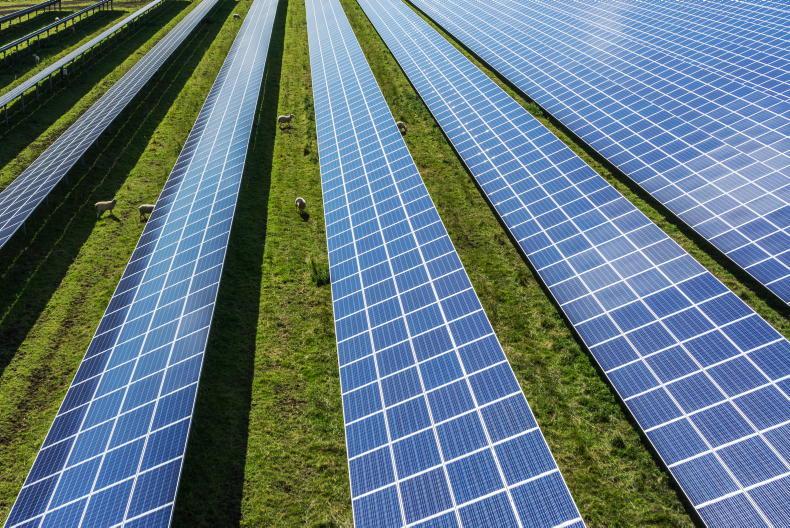Today's episode of the Teagasc Virtual Beef Week looks at methane emissions and carbon.
Methane data collected on animals from the same breed is showing a variation of 17% per kg of liveweight produced, Teagasc research has found.
Beef Talk – Ep 3: Sustainable Beef Production.
Livestock production faces challenges in reducing greenhouse gas (GHG) emissions to meet EU and national targets. Methane, a GHG 28 times more potent than carbon dioxide, is released as a byproduct of feed digestion in the rumen of cattle and sheep and from stored manure and slurry on farm.
Under EU legislation, Ireland has committed to reduce GHG emissions by 40% by 2030, compared to its 2005 levels. Hence there is an urgent requirement for innovative strategies to reduce methane emissions from agriculture in Ireland.
On today’s show, Professor Sinead Waters will discuss the ongoing research in Teagasc focusing on reducing methane emissions from beef production and which includes the development of farm-ready technologies to reduce methane emissions from animals digesting their food including a number of feed supplements (including 3-NOP, halides, seaweeds and oils), and from stored manure and slurry.
The main purpose of the centre is to collect data on progeny from AI bulls of interest
A lot of the methane work is taking place at ICBF, Tully. The main purpose of the centre is to collect data on progeny from AI bulls of interest. Twenty progeny (a mix of steers, bulls and heifers) are selected from each AI sire to be evaluated and data is collected on traits used in €uro-Star indexes such as feed intake and growth rate.
However, traits that are not currently used in genetic evaluations such as meat-eating quality and GHG emissions are currently also being evaluated. Methane data is captured using a Greenfeed system (pictured). Animals are enticed to use the system with small amounts of meal that drop at set intervals. The animal is then identified by the Greenfeed machine through its RFID tag. As the animal consumes the feed, the air surrounding the animals head, including that of which is exhaled is extracted via a fan. It is then passed through sensors and a value for each animal’s methane emissions is determined.
Variation
Methane data collected on animals from the same breed is showing a variation of 17% variation per kilo of liveweight produced. The increase in replacement index for suckler cows nationally from €78 in 2015 to €100 in 2020 will result in GHG emissions reducing this year by 0.56% per cow.
Early research is showing that breeding will play an important role in reducing the carbon footprint of animals without compromising production traits. Paul Smith and Stephen Conroy have all the details on today’s show.
Carbon sequestration
Soil carbon sequestration is a term often referenced when GHG and climate change is discussed, but what is it?
Soil carbon sequestration is the process of capturing carbon dioxide (CO2) from the atmosphere and storing it in plant material or soil. Therefore increasing carbon sequestration can offset the emissions associated with livestock production and reduce the carbon footprint of livestock production. Increasing soil organic carbon also improves soil workability, water holding capacity, and nutrient availability.
The principal ways to increase sequestration are:
Improve soil nutrient status: optimal pH and soil N and P status will improve grass productivity which in turn will enhance soil carbon by increasing C inputs into soil.Hedgerows and shelterbelts: letting existing hedges and trees grow wider and taller, while also planting new hedges and tress can increase sequestration and biodiversity. Clover and multi-species swards: sowing clover and deep-rooting species, such as plantain can increase soil carbon by increasing root biomass.Optimise grazing: paddock-based, moderate grazing intensity (1.5 LU/ha) can increase soil carbon by increasing litter incorporation in soil and stimulating shallow root growth.These are not onerous tasks and many have the potential to increase output while reducing costs e.g. improved soil nutrient status, clover etc. Using the average NFS suckler beef farm (stocking rate = 1.35 LU/ha), preliminary analysis indicates that carbon sequestration could offset 46% of on-farm emissions.
Biodiversity
Sustainability assessment needs to include biodiversity and farmland habitats, and international sustainability accreditation standards expect this. Today’s show will discuss recent Teagasc research to improve methods to include biodiversity in sustainability measurement. We will also discuss results-based payments for biodiversity conservation.
Conservation and protection of farmland wildlife and habitats is an important dimension of environmental sustainability
Results-based payments are expected to be used more and more, and give opportunities to focus not just on the quantity of habitats, but also on their quality.
Conservation and protection of farmland wildlife and habitats is an important dimension of environmental sustainability. The recent EU Biodiversity and Farm to Fork Strategies clearly indicate a need for effective methods for biodiversity conservation, as part of the development of sustainable production systems. This was also underpinned by the recent EU Court of Auditors Special Report on farmland biodiversity, which concluded that agricultural policy has failed to halt the decline in biodiversity.
Read more
In pictures: smaller numbers but high demand at Kilkenny calf sale
Steer quotes edge higher as factories remain anxious for cattle
Watch: Holstein Friesians outperform Angus in Teagasc trial
Today's episode of the Teagasc Virtual Beef Week looks at methane emissions and carbon.
Methane data collected on animals from the same breed is showing a variation of 17% per kg of liveweight produced, Teagasc research has found.
Beef Talk – Ep 3: Sustainable Beef Production.
Livestock production faces challenges in reducing greenhouse gas (GHG) emissions to meet EU and national targets. Methane, a GHG 28 times more potent than carbon dioxide, is released as a byproduct of feed digestion in the rumen of cattle and sheep and from stored manure and slurry on farm.
Under EU legislation, Ireland has committed to reduce GHG emissions by 40% by 2030, compared to its 2005 levels. Hence there is an urgent requirement for innovative strategies to reduce methane emissions from agriculture in Ireland.
On today’s show, Professor Sinead Waters will discuss the ongoing research in Teagasc focusing on reducing methane emissions from beef production and which includes the development of farm-ready technologies to reduce methane emissions from animals digesting their food including a number of feed supplements (including 3-NOP, halides, seaweeds and oils), and from stored manure and slurry.
The main purpose of the centre is to collect data on progeny from AI bulls of interest
A lot of the methane work is taking place at ICBF, Tully. The main purpose of the centre is to collect data on progeny from AI bulls of interest. Twenty progeny (a mix of steers, bulls and heifers) are selected from each AI sire to be evaluated and data is collected on traits used in €uro-Star indexes such as feed intake and growth rate.
However, traits that are not currently used in genetic evaluations such as meat-eating quality and GHG emissions are currently also being evaluated. Methane data is captured using a Greenfeed system (pictured). Animals are enticed to use the system with small amounts of meal that drop at set intervals. The animal is then identified by the Greenfeed machine through its RFID tag. As the animal consumes the feed, the air surrounding the animals head, including that of which is exhaled is extracted via a fan. It is then passed through sensors and a value for each animal’s methane emissions is determined.
Variation
Methane data collected on animals from the same breed is showing a variation of 17% variation per kilo of liveweight produced. The increase in replacement index for suckler cows nationally from €78 in 2015 to €100 in 2020 will result in GHG emissions reducing this year by 0.56% per cow.
Early research is showing that breeding will play an important role in reducing the carbon footprint of animals without compromising production traits. Paul Smith and Stephen Conroy have all the details on today’s show.
Carbon sequestration
Soil carbon sequestration is a term often referenced when GHG and climate change is discussed, but what is it?
Soil carbon sequestration is the process of capturing carbon dioxide (CO2) from the atmosphere and storing it in plant material or soil. Therefore increasing carbon sequestration can offset the emissions associated with livestock production and reduce the carbon footprint of livestock production. Increasing soil organic carbon also improves soil workability, water holding capacity, and nutrient availability.
The principal ways to increase sequestration are:
Improve soil nutrient status: optimal pH and soil N and P status will improve grass productivity which in turn will enhance soil carbon by increasing C inputs into soil.Hedgerows and shelterbelts: letting existing hedges and trees grow wider and taller, while also planting new hedges and tress can increase sequestration and biodiversity. Clover and multi-species swards: sowing clover and deep-rooting species, such as plantain can increase soil carbon by increasing root biomass.Optimise grazing: paddock-based, moderate grazing intensity (1.5 LU/ha) can increase soil carbon by increasing litter incorporation in soil and stimulating shallow root growth.These are not onerous tasks and many have the potential to increase output while reducing costs e.g. improved soil nutrient status, clover etc. Using the average NFS suckler beef farm (stocking rate = 1.35 LU/ha), preliminary analysis indicates that carbon sequestration could offset 46% of on-farm emissions.
Biodiversity
Sustainability assessment needs to include biodiversity and farmland habitats, and international sustainability accreditation standards expect this. Today’s show will discuss recent Teagasc research to improve methods to include biodiversity in sustainability measurement. We will also discuss results-based payments for biodiversity conservation.
Conservation and protection of farmland wildlife and habitats is an important dimension of environmental sustainability
Results-based payments are expected to be used more and more, and give opportunities to focus not just on the quantity of habitats, but also on their quality.
Conservation and protection of farmland wildlife and habitats is an important dimension of environmental sustainability. The recent EU Biodiversity and Farm to Fork Strategies clearly indicate a need for effective methods for biodiversity conservation, as part of the development of sustainable production systems. This was also underpinned by the recent EU Court of Auditors Special Report on farmland biodiversity, which concluded that agricultural policy has failed to halt the decline in biodiversity.
Read more
In pictures: smaller numbers but high demand at Kilkenny calf sale
Steer quotes edge higher as factories remain anxious for cattle
Watch: Holstein Friesians outperform Angus in Teagasc trial










SHARING OPTIONS